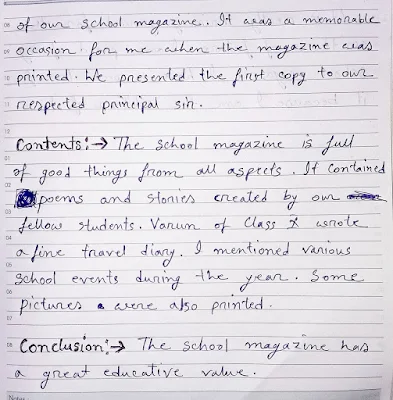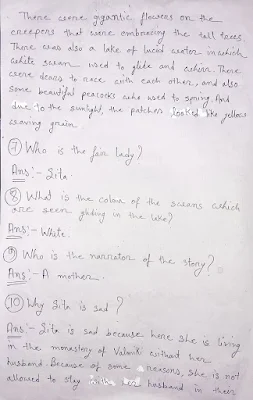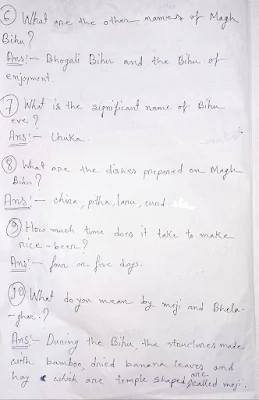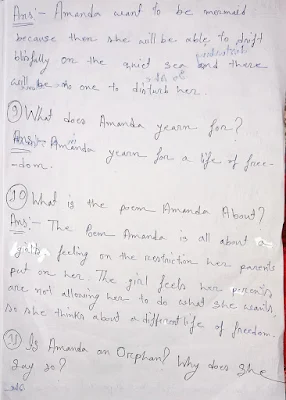Sita By Toru Dutt All Questions with Answers
Sita – Summary and Analysis
Introduction to "Sita"
"Sita" is a poem written by Toru Dutt, a famous Indian poet of the 19th century. The poem is inspired by the Ramayana and describes Sita’s life in exile, where she is filled with sorrow. The poem is narrated from the perspective of three little girls who listen to their mother’s storytelling.
Toru Dutt beautifully blends mythology with nature imagery, creating a melancholic yet vivid picture of Sita’s suffering.
Summary of "Sita"
The poem describes a scene where three young girls are listening to their mother narrate the story of Sita’s exile in the forest. The story takes place in a mystical landscape filled with beautiful flowers, tall trees, and singing birds.
Sita is shown sitting alone in her hut, filled with sorrow and despair. She has been wrongfully abandoned and longs for her family. The poet highlights the contrast between nature’s beauty and Sita’s suffering, making the readers feel sympathy for her.
The girls listening to the story are so deeply moved that they almost feel Sita’s presence in their room. The poem ends on a mystical note, showing how powerful storytelling can be.
Themes of "Sita"
- Suffering and Exile – Sita’s pain and loneliness in the forest symbolize the struggles of innocent women facing injustice.
- Power of Storytelling – The poem highlights how stories can transport listeners to another world, making them feel deep emotions.
- Nature and Emotion – Toru Dutt uses rich nature imagery to create a contrast between the beauty of the forest and Sita’s sorrow.
- Mysticism and Imagination – The little girls are so immersed in the story that they almost believe Sita is real.
Short Answer Type Questions
1. Who is the narrator of the poem "Sita"?
Answer: The poem is narrated from the perspective of three young girls listening to their mother’s storytelling.
2. What is the setting of Sita’s exile in the poem?
Answer: The setting of Sita’s exile is a beautiful yet lonely forest, filled with tall trees, bright flowers, singing birds, and rushing streams.
3. How does Toru Dutt describe Sita’s emotions in the poem?
Answer: Sita is depicted as lonely and sorrowful. She sits alone in her hut, longing for her family and suffering from injustice.
4. How do the girls react to the story of Sita?
Answer: The girls are so deeply moved by the story that they feel as if Sita is physically present in their room.
5. What role does nature play in the poem?
Answer: Nature acts as a symbolic contrast – while the forest is beautiful and vibrant, Sita is filled with sorrow and loneliness.
Long Answer Type Questions
1. How does Toru Dutt depict Sita’s suffering in the poem?
Answer:
Toru Dutt portrays Sita’s suffering with deep emotion. She is shown sitting alone in a beautiful yet lonely forest. Although surrounded by nature’s beauty, Sita feels isolated and abandoned. The poet describes her as being lost in sorrow, emphasizing the injustice she faces.
Through powerful imagery and contrast, Toru Dutt makes the reader sympathize with Sita’s pain, showing how unfair her exile was.
2. Discuss the significance of storytelling in the poem "Sita".
Answer:
Storytelling plays a major role in the poem. The mother’s narration is so vivid and emotional that the three girls become completely immersed in the story. They can almost see Sita in front of them, showing how powerful storytelling can be.
The poem suggests that stories have the power to influence emotions, create imagination, and connect generations. This highlights the rich oral traditions of Indian culture.
3. How does Toru Dutt use nature imagery in "Sita"?
Answer:
Toru Dutt uses rich and detailed nature imagery to describe Sita’s surroundings:
- "Tall trees," "bright flowers," "singing birds" – Create a picture of a magical yet lonely forest.
- "Shadows deep," "sorrow dark" – Reflect Sita’s emotional state.
- Contrast between beauty and sadness – While nature is full of life, Sita remains sorrowful and abandoned.
Through this imagery, the poet enhances the emotional depth of the poem and makes the reader feel Sita’s pain and isolation.
Extract-Based Questions
1. Read the following extract and answer the questions:
"Three happy children in a darkened room!
What do they gaze on with wide-open eyes?"
(a) Who are the "three happy children"?
Answer: The "three happy children" are the poet and her two siblings, who are listening to their mother’s story.
(b) What are they gazing at?
Answer: They are gazing at the imaginary figure of Sita, which appears so real in their minds that they feel her presence.
(c) What does this extract suggest about storytelling?
Answer: It suggests that storytelling has a deep impact on listeners, making them emotionally connected to the story.
2. Read the following extract and answer the questions:
"Deep silence in the shadowy room,
And, half in dreams, they see her there."
(a) What does "deep silence" indicate?
Answer: It indicates the intensity and emotional effect of the story on the children.
(b) Who does "her" refer to?
Answer: "Her" refers to Sita, whose presence the children almost feel in the room.
(c) What does "half in dreams" mean?
Answer: It means the children are so deeply lost in the story that they feel it is real, as if in a dream.
Conclusion
Toru Dutt’s "Sita" is a beautifully written poem that captures the power of storytelling, the depth of emotions, and the beauty of nature. It highlights Sita’s suffering, showing how she remains a symbol of sacrifice and devotion. Through rich imagery and a mystical tone, the poem creates a powerful impact on the reader.























































